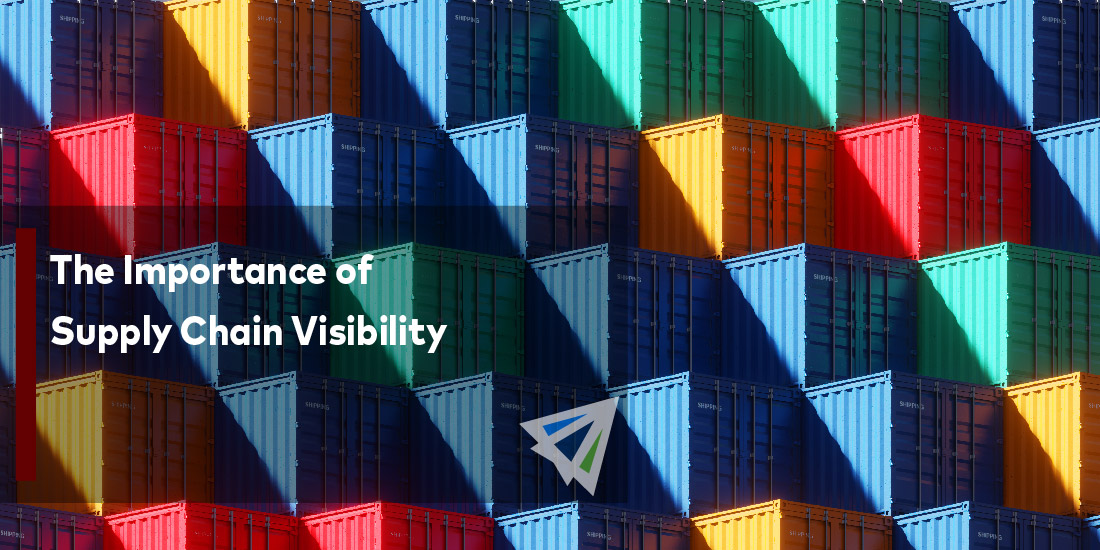The Importance of Supply Chain Visibility
Internationally trading businesses love talking about supply chain. Everyone believes they have a unique supply chain and logistics process, and while it’s true that everyone does things a little differently, for the most part supply chains have remained largely unchanged for the last several decades.
However, the last couple of years have proven to companies just how little control and understanding they have over their supply chains. We’ve certainly had an increase in use of technology to help introduce clarity to administrative issues, but it has had little to no tangible effect on the supply chain industry as a whole.
The central issue here is the lack of “control” that companies have over their supply chains. Market circumstances over the past several years have exposed just how little influence companies have over their product’s journey as lockdowns and COVID-19 restrictions have pushed ports and carriers to the limit amidst strenuous global economic conditions.
Acting to Solve Supply Chain Crises
Due to the recent global and domestic supply chain crises, logistics providers and businesses dealing in international trade have just begun to shift their models to focus on predictive and prescriptive actions. These focus primarily on efficiency, resilience, and sustainability.
Efficiency focuses on bringing clarity to the process by cutting out unnecessary product and operational waste. Resilience puts an emphasis on adaptability – the ability to shift approach and processes with ease in the face of opposition and challenges. And finally, sustainability is keyed in on reducing the carbon footprint of the supply chain.
This entire conversation is centered around the concept of visibility – the cornerstone which enables companies to remain adaptive as new insights are gleaned throughout the process. Visibility assisted and empowered by digital technology allows companies to adapt their processes to fit the modern international trade landscape, and it revolves around three main concepts:
Seeing
“Seeing” is exactly as it sounds – the capability to have instant sight into the whereabouts of a product, it’s condition and status, and the subsequent forecasts that can be made regarding it’s expected to delivery. Data carriers are the primary source where this information is stored and transferred. Barcodes and QR codes, chips, and technology utilizing IoT (Internet of Things) all fall in this category.
Understanding
“Understanding” transcends the idea of simply receiving or transmitting data, and travels into the realm of “data-based inference.” It involved receiving information and arriving at conclusions based on the data. Examples of this “understanding” are asking questions like the following:
Is this an at-risk shipment lane based on recent market conditions?
Which carrier is most apt to handle this type of shipment?
Acting
Finally, “acting” is the combination of “seeing” and “understanding,” whereby data is received and analyzed, and then used in a predetermined way according to standard operating procedures to make decisions involved scheduling, routing, or billing.
Visibility is truly the most important asset for internationally trading companies to have access to. The wider of a reach the visibility has, the less notifications and urgent points of action fall through the cracks. It’s a major focal point on the cutting edge of supply chain technology and is far from completion, but as more local and international businesses hop on board – from manufacturers to warehouses to carriers and ports – the more of a reality “end-to-end” visibility becomes.
As technology adapts, it’s important that shippers remain in conversation with their freight forwarders about developments and technological advances in the journey towards end-to-end visibility, as it’s the greatest tool to empower businesses with the power to act on shipments throughout their cargo’s journey.
Looking Ahead
If you have any questions about end-to-end visibility, what we do, and how it would impact your shipping process, please don’t hesitate to reach out to one of our team members! We would love to help in any way we can!
